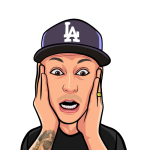
This is the second installment of our offseason transactions roundup. The FTN Fantasy MLB team will discuss fantasy implications from the latest MLB trades and free agent signings.
Our second segment is covering transactions from Tuesday and Wednesday. Buckle up, there were a lot of them.
NL East
Atlanta Braves: Eddie Rosario (OF), Collin McHugh (P)
The Braves are continuing to beef up their lineup, bringing back Eddie Rosario, who won the NLCS MVP during their World Series run. Rosario was traded to the Braves at the end of July but missed the majority of August with an abdominal injury. Everything went right for Rosario after returning, totaling 98 plate appearances in September, owning a .273 AVG, .307 ISO and 137 wRC+. Rosario’s September continued into the playoffs as history was written. Even though the Braves will be without Freddie Freeman in 2022, they should get Ronald Acuña Jr. back in early May and still have a loaded lineup that includes newly acquired Matt Olson along with Ozzie Albies, Austin Riley, Marcell Ozuna and Dansby Swanson. Over the last two weeks, Rosario’s NFBC ADP is 180, slotting him between outfielders Alex Verdugo and Dylan Carlson. I’m not expecting Rosario’s ADP to climb too much, but I do anticipate a tiny bit of inflation with him returning to the Atlanta Braves.
Collin McHugh is a fantastic addition to this Braves’ bullpen that is led by their closer Will Smith. McHugh will likely join Tyler Matzek in high leverage situations like we saw in 2021. Last year, McHugh spent his time with the Tampa Bay Rays, who tend to do things a bit differently, but either way McHugh was mostly used in relief, pitching 64 innings with a 30.4% strikeout rate and 4.9% walk rate. He also posted his best ERA (1.55) while limiting batters to a 2.5% barrel rate. Last season was also McHugh’s highest swinging strike rate (13.8%). I don’t envision McHugh coming in to be Braves’ closer or to even threaten Smith for the role, but McHugh could be a viable reliever, providing good ratios with a high strikeout rate. Hopefully you luck into some wins along the way. If you drafted McHugh in Draft Champions, you should feel good about the return. In a 30-round league with FAAB, he might be worthy of a last pick if you’re looking for an arm that could help with ratios.
Philadelphia Phillies: Kyle Schwarber (OF)
Before signing with the Phillies, Kyle Schwarber has played with three teams: Cubs, Nationals and Red Sox. Out of those three teams, the Nationals had the best park factor, grading out 11% above average according to Statcast Park Factors. The Phillies, who just ponied up $79 million, host their games at Citizens Bank Park, which has a home run park factor 15% above league average. Schwarber will be slotted in the heart of the Phillies’ lineup, surrounded by Bryce Harper, J.T. Realmuto JT Realmuto J.T. Realmuto and Rhys Hoskins. Schwarber will be in his age-29 season and already has three seasons of 30-plus homers. If it weren’t for a brutal hamstring injury and COVID-19, Schwarber would have likely had his best season of his career in 2021. Even so, he hit 32 home runs in just 471 plate appearances with a career-high .266 AVG, .288 ISO, 145 wRC+, .399 xWOBA, 17.5% barrel rate and 52.2% hard hit rate. Schwarber’s ADP over the last two weeks is 120, as he was already starting to get pushed up a bit in drafts. As of now he is going slightly after Jesse Winker (113), Giancarlo Stanton (114), Myles Straw (115) and Mitch Haniger (117).I’m not gonna lie, I would likely push Schwarber above that entire group.
NL Central
Cincinnati Reds: Mike Minor (P)
Mike Minor is leaving Kauffman Stadium, which grades out 24% below the average when it comes to home runs according to Statcast Park Factors. The 34-year-old now finds himself pitching his home games at Great American Ball Park, grading out as the worst park when it comes to allowing home runs, 30% above league average. That doesn’t bode well for somebody that has a career 1.23 HR/9 … and that ratio bakes in the good times. Since 2018, his HR/9 has spiked, with rates of 1.43, 1.30, 1.75 and 1.47. This is a disastrous recipe. Looking at the Reds’ schedule for the month of April doesn’t bode well for Minor from an opponent perspective, either, but keep tabs on his velocity and health, as Minor will get favorable starts on the road against the Pirates and Cubs. Streaming him on the cheap via FAAB is my most optimistic outlook as of now.
Chicago Cubs: Seiya Suzuki (OF), David Robertson (P), Steven Brault (P)
Seiya Suzuki is coming to the states, and I couldn’t be more excited. After the Cubs sold off all their prime assets in 2021, it’s nice to see them get back to opening up their checkbook. The Cubs are a large-market team, but as of now, they’re lacking in the talent department. The offense will be centered around Willson Contreras and Ian Happ. Not great, but that’s a positive for Suzuki, who should get all the playing time he can absorb. Last year, we saw Ha-Seong Kim sign with the Padres but largely end up in a bench/fill-in role. Kim’s playing time was hamstrung because the Padres lineup was loaded with talent and depth. This isn’t the case for these Cubs, so I expect Suzuki’s volume to be plentiful. His current ADP over the last two weeks is 195, which might rise little with the fantasy baseball market knowing he is playing in the states with a defined role in the outfield. If you’re drafting Suzuki, I assume you’re hoping for a 20/10 season with an average between .250-.260.
David Robertson comes back to the Cubs, adding to their depleted bullpen. Codi Heuer is on the IL (elbow), paving the way for Robertson to potentially get save opportunities. Rowan Wick is currently being the drafted the highest of all Cubs’ relievers with an ADP of (278) versus Robertson’s ADP of 747, which will likely shoot up 300-plus picks if there are any reports of him potentially closing.
Steven Brault signed a major league deal with the Cubs and is currently slotted in the rotation as their fifth starter. Brault isn’t useful in 12-team leagues and likely won’t be getting drafted in 15-team leagues. At best he becomes a streaming option at home against the Pirates or Reds. He has an abysmal strikeout rate (18.8%) while lacking control with a 11.3% walk rate. His career 7.5% K-BB rate leaves a lot to be desired. With that said, anybody with a pulse that starts could be useable at given times in NL only leagues.
Pittsburgh Pirates: Daniel Vogelbach (1B), Heath Hembree (P)
Daniel Vogelbach signed a one-year, $1 million deal with the Pirates with a $1.5M team option for 2023. There could be some use here in deep leagues when the Pirates are facing an ample number of right-handed pitchers, as Vogelbach will likely find himself in a platoon role, sitting against left-handed pitching. Vogelbach has a high career walk rate (15.7%), which helps keep his OBP (.336) respectable. With the lack of talent in Pittsburgh and the power Vogelbach flashes against right-handed pitching, he should be slotted into the cleanup spot when facing right-handed pitching. There could be useful weeks in Draft Champions as a streaming option. The NL Central currently has Steven Matz, Wade Miley, Steven Brault, Mike Minor and Eric Lauer as the projected left-handed starters, which isn’t many. Vogelbach is on the right side of the platoon in the thick of a lineup that has Ke’Bryan Hayes and Bryan Reynolds slotted to hit in front of him. Vogelbach gets a boost in NL only leagues.
Heath Hembree isn’t really relevant in drafts right now, especially your standard 15-team, 30-round drafts, with an ADP of 741. Hembree is a 32-year-old veteran with a bit of closing experience, saving nine games last season. Hembree’s new teammate David Bednar is being drafted as the closer with an ADP of 161. I would assume Bednar is still going to be the closer there as he was effective and has the stuff to get the job done, but Hembree does pose a minor threat due to being a vet that received closing opportunities last season.
Milwaukee Brewers: Andrew McCutchen (OF)
After Andrew McCutchen signed with the Brewers, you saw Twitter go two ways: Fans who were happy for him, and fantasy baseball managers who were sad about their Tyrone Taylor shares. I still think there will be plenty of playing time for Taylor, as the Brewers’ outfield currently consists of Christian Yelich, Lorenzon Cain and McCutchen, all aging and all with injury history. We see this all the time when we think a team’s roster or rotation is set in stone. It is … until injury cracks split the stone. Taylor’s current ADP over the last two weeks is 393 and I expect him to drop out of the top 450, which would make him not worthy in a 30-round FAAB league. If/when injuries occur, I would anticipate Taylor to get some love via FAAB, depending on the severity and time missed from a teammate. On the other hand, we have to be happy for McCutchen, who goes back to the NL Central. American Family Field is slightly above league average (6%) when it comes to home run park factor, ranking 11th. Sprinkling some fairy dust on the Brewers and their health, this lineup has the potential to cause some havoc as they have enough talent to get into a slugfest if need be. McCutchen’s ADP is 348, grouping him around a lot of outfielders that currently have question marks like Jeff McNeil (329), Brandon Marsh (336), Vidal Bruján (339) and Randal Grichuk (341). I’m expecting McCutchen to rise a bit in ADP as we get closer to Opening Day.
NL West
Colorado Rockies: Kris Bryant (3B/OF)
My oh my! Kris Bryant signs with the Rockies for seven years and $182 million. This comes one offseason after the team traded Nolan Arenado to the Cardinals while absorbing some of his contract. But that was then, and this is now. The upgrade in park factor is substantial, as Coors Field is the most optimal park for hitters when it comes to scoring runs, grading out 30% above league average. The fantasy baseball market is going to heat up immensely for Bryant, who currently has an ADP of 106. A friend in the industry saw Bryant get drafted at pick 71, shortly after Austin Riley. I would project that to be a common theme moving forward as fantasy managers and analysts are all aware of the impact Coors can have for an offensive player. So the question becomes whether you’re willing to pony up the new price tag. If so, you’re likely going to have to draft in Round 5-6 in 15-team leagues.
Los Angeles Dodgers: Freddie Freeman (1B)
The rich get richer, and I’m here for it. It’s no secret I’m a lifelong Los Angeles Dodgers fan. Putting that aside and looking at Freddie Freeman from a fantasy perspective, I don’t think the move to Los Angeles can push his draft market up too much, as he is already the second first baseman off the board with an ADP of 18. Freeman’s min over the last two weeks is 15, making him the last pick in the first round. Freeman will also get nine road games at Coors Field to help pad the stats along the way. You were either in on Freddie at his current cost or likely out altogether. Could we see Freeman jump ahead of Mike Trout or Rafael Devers? I think so, as the team context and park factor have fantasy managers drooling, and the thought of Mookie Betts, Freeman and Trea Turner as a 1-2-3 is enticing, but this move shouldn’t push the needle too much.
San Francisco Giants: Joc Pederson (OF)
Joc Pederson signed a one-year deal with the Giants to become part of their platoon brigade. Pederson will get all the burn he can get against right-handed pitching, but he won’t see very many at bats against lefties. The Giants organization prides itself on taking advantage of analytics and the splits that come with it. There will be weeks where the Giants will have a mouthwatering schedule that is filled with opposing right-handed pitchers then there will come weeks or weekends where there are enough left-handed pitchers on the schedule, making Pederson useless at times due to lack of volume. Fortunately, Pederson is on the strong side of the platoon, making him a viable fifth outfielder or reserve bat off the bench in 15-team leagues. Always keep in mind, Peterson will likely lose late-inning plate appearances at times if/when a left-handed reliever enters the game.
High-Level (NL)
- Upgrade: Art Warren (all formats), Andrew McCutchen (15s), Daniel Vogelbach (NL only), Eddie Rosario (all formats), Kris Bryant (all formats), Kyle Schwarber (all formats)
- Downgrade: Connor Joe (all formats), Joc Pederson (12s), Sam Hilliard (all formats), Tyrone Taylor (all formats)
AL East
Boston Red Sox: Jake Diekman (P)
The Boston Red Sox inked Jake Diekman to a two-year, $8 million deal, adding him to what is a below-average bullpen. As of writing this, it isn’t certain who will be the Red Sox closer come Opening Day, but the market seems to think Garrett Whitlock (239) or Matt Barnes (256) will get the job. On the other hand, Diekman has an ADP of 673. He has 14 career saves, registering half of those last season with the Athletics. We have now seen Diekman rack up back-to-back seasons with a strikeout rate of 30% or more, boasting 36.9% in 2020 and 31.7% in 2021. I’m projecting Jake Diekman to be a high leverage pitcher that faces left-handed hitters in big situations. Even so, if Whitlock or Barnes aren’t effective it could lead to save opportunities for Diekman, although I wouldn’t anticipate that.
New York Yankees: Anthony Rizzo (1B)
I couldn’t be more pleased with this landing spot as the park factor at Yankee Stadium is a blessing for left-handed hitters, grading out 11% above league average compared to Wrigley Field, which is 5% below league average for home runs. Topple that with the divisional park factors, and we have something brewing for Anthony Rizzo. For entertainment purposes, peep Roster Resource’s projected lineup for the Yankees. Health forbidding, this could be Rizzo’s best season since 2019 when it comes to counting stats (runs and RBIs) — he mustered 89 runs and 94 RBIs that year, good for a total of 183. He is currently the 19th first baseman off the board when looking at his ADP (191). I’m sure there will be a Yankees’ tax when it comes to drafting him now that we know he is in pinstripes, although I’m not certain how much inflation he will get. If he gets near the Rhys Hoskins’ (134) range, I’ll be fading him completely. If the Yankees don’t end up trading Luke Voit, his current ADP (257) isn’t going to be providing a profit.
Toronto Blue Jays: Matt Chapman (3B)
This is probably one of the few transactions I’ll get correct this offseason. I have been rather adamant on the Blue Jays acquiring Matt Chapman from Oakland all offseason. His defense provides an immediate boost to his pitching teammates Kevin Gausman, Hyun Jin Ryu and José Berríos, who all have ground ball rates north of 40%. Chapman is a three-time Gold Glove winner and is arguably the best defensive third basemen in the game. Now for the fun part, Chapman gets a massive boost in lineup context being surround by Vladimir Guerrero Jr., Bo Bichette & Co. The Blue Jays’ home park (Rogers Centre) ranks sixth overall in home run park factor while Oakland Coliseum ranks 25th. It doesn’t take a genius to know Chapman is going to ascend in ADP with his new landing spot being one of the most optimal in all of baseball. The question becomes, how aggressive will his inflation be? Over the last two weeks he is the 17th third baseman off the board with an ADP of 194. I’ll take a guess and say he goes above Luis Urías who has an ADP of 153.
AL Central
Detroit Tigers: Andrew Chafin (P)
If you have exposure to Tigers’ reliever Gregory Soto, now is the time to start getting concerned. Sure, there has been coachspeak from A.J. Hinch stating Soto is his closer (for now). But the Tigers just gave a substantial contract to Andrew Chafin, two years at $13 million. Chafin does have an opt out after this season, but we aren’t worried about that this draft season. Chafin is a 31-year-old, coming off a solid 2021 season that began with the Cubs and ended with the Athletics. He threw 68.2 innings with a 1.83 ERA and 0.93 WHIP. He totaled five saves, the most in his career. The ADP difference between Chafin and Soto is massive — over the last two weeks, Soto has an ADP of 171 versus Chafin’s 667. I’m confident the market will begin moving Chafin up into the 350-400 range in ADP until we get further information or updates on the Tigers’ bullpen. For now, I’m completely fading Soto at his current ADP or anything close to it.
Kansas City Royals: Zack Greinke (P), Amir Garrett (P)
Zack Greinke goes back to where it all started, signing a one-year, $13 million contract with the Royals. To be honest, I have no clue what to expect results-wise from Greinke as he enters his 19th season at the age of 38. What we do know is he pitches innings and plenty of them. I expect his current ADP (336) to ascend just a bit because we know what cap he will be wearing. Hopefully he wants to assist the youth movement along the way, but for now, let’s just hope Greinke can be a cheaper version of Kyle Hendricks, who has an ADP of 304.
Amir Garrett joins a talented bullpen that includes Scott Barlow, Josh Staumont and Dylan Coleman. I would assume Garrett was acquired for added depth and will be used to put out fires in late-inning, high-leverage spots or come in to finish off a left-handed hitter in a big situation. I won’t be targeting Garrett in my upcoming drafts as of today, even with an ADP of just 691.
AL West
Texas Rangers: Greg Holland (P), Brad Miller (1B/OF)
The corpse of Greg Holland continues to muddy waters as he goes from team-to-team, adding uncertainty to each bullpen he joins. I wasn’t in on Joe Barlow due to the team spending big this offseason, which creates more threats. Holland is another one, a veteran with closing experience. Relievers like Holland aren’t sexy, but they seem to always make things murky. Barlow’s current ADP is 216, which is far too pricey for my liking.
Brad Miller gets a gig in Texas. As of now it looks like he could be their third baseman, but I’m not confident Miller is their final destination at the position. As of today, I’ll give Miller a boost in Draft Champions formats and AL only leagues with an ADP of only 516.
High-Level (AL)
- Upgrade: Andrew Chafin (all formats), Anthony Rizzo (all formats), Brad Miller (AL Only), Matt Chapman (all formats)
- Downgrade: Gregory Soto (all formats), Joe Barlow (all formats), Gregory Soto, Luke Voit (all formats)











































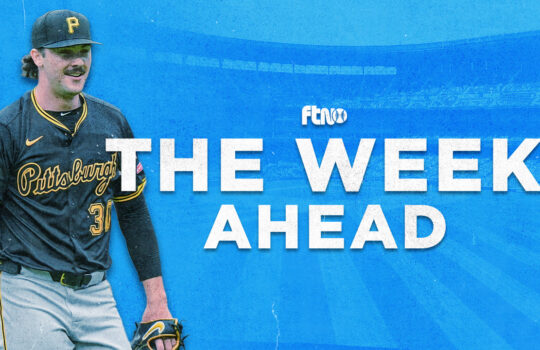



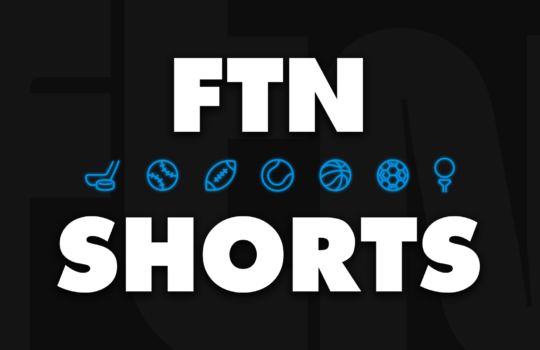
 New York Jets
New York Jets  New England Patriots
New England Patriots  Miami Dolphins
Miami Dolphins  Buffalo Bills
Buffalo Bills  Pittsburgh Steelers
Pittsburgh Steelers  Cleveland Browns
Cleveland Browns  Cincinnati Bengals
Cincinnati Bengals  Baltimore Ravens
Baltimore Ravens  Tennessee Titans
Tennessee Titans  Jacksonville Jaguars
Jacksonville Jaguars  Indianapolis Colts
Indianapolis Colts  Houston Texans
Houston Texans  Las Vegas Raiders
Las Vegas Raiders  Los Angeles Chargers
Los Angeles Chargers  Kansas City Chiefs
Kansas City Chiefs  Denver Broncos
Denver Broncos  Washington Commanders
Washington Commanders  Philadelphia Eagles
Philadelphia Eagles  New York Giants
New York Giants  Dallas Cowboys
Dallas Cowboys  Minnesota Vikings
Minnesota Vikings  Green Bay Packers
Green Bay Packers  Detroit Lions
Detroit Lions  Chicago Bears
Chicago Bears  Tampa Bay Buccaneers
Tampa Bay Buccaneers  New Orleans Saints
New Orleans Saints  Carolina Panthers
Carolina Panthers  Atlanta Falcons
Atlanta Falcons  San Francisco 49ers
San Francisco 49ers  Seattle Seahawks
Seattle Seahawks  Los Angeles Rams
Los Angeles Rams  Arizona Cardinals
Arizona Cardinals 






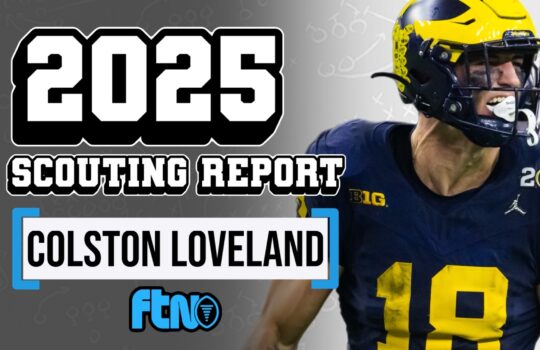


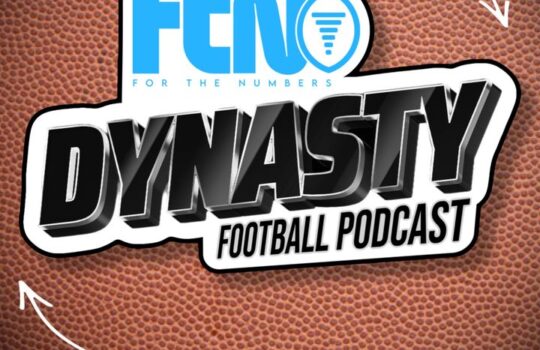
 Boston Celtics
Boston Celtics  Brooklyn Nets
Brooklyn Nets  Philadelphia 76ers
Philadelphia 76ers  New York Knicks
New York Knicks  Toronto Raptors
Toronto Raptors  Chicago Bulls
Chicago Bulls  Detroit Pistons
Detroit Pistons  Milwaukee Bucks
Milwaukee Bucks  Cleveland Cavaliers
Cleveland Cavaliers  Indiana Pacers
Indiana Pacers  Orlando Magic
Orlando Magic  Atlanta Hawks
Atlanta Hawks  Charlotte Hornets
Charlotte Hornets  Miami Heat
Miami Heat  Washington Wizards
Washington Wizards  Denver Nuggets
Denver Nuggets  Minnesota Timberwolves
Minnesota Timberwolves  Oklahoma City Thunder
Oklahoma City Thunder  Portland Trail Blazers
Portland Trail Blazers  Utah Jazz
Utah Jazz  LA Clippers
LA Clippers  Golden State Warriors
Golden State Warriors  Los Angeles Lakers
Los Angeles Lakers  Phoenix Suns
Phoenix Suns  Sacramento Kings
Sacramento Kings  Dallas Mavericks
Dallas Mavericks  Houston Rockets
Houston Rockets  Memphis Grizzlies
Memphis Grizzlies  New Orleans Pelicans
New Orleans Pelicans  San Antonio Spurs
San Antonio Spurs 










